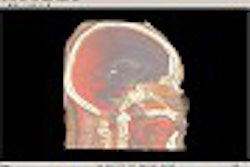Hands-on training in obstetrical ultrasound apparently doesn’t improve the performance of radiology residents on the radiology board exam’s obstetrical ultrasound cases, according to a new study.
But those findings shouldn’t be seen as negating the value of hands-on training, says the study’s lead researcher. Instead, Dr. Mary Frates, an associate professor of radiology at Harvard Medical School and director of the fellowships program at Brigham and Women’s Hospital, both in Boston, views her study as confirming the limitations of the board exams.
"I think that hands-on scanning skills in sonography is a critical component of a radiology residency program, and I wouldn’t limit that to obstetrical scans," Frates said in an interview with AuntMinnie.com.
"There’s no way to accurately define and test for sonographic skills at graduation. The only test we have of graduating residents is the boards, and it’s an imperfect measure. There is nothing else quantitative available to us to look at," Frates said.
Frates presented her group’s preliminary results at the 2002 Society of Radiologists in Ultrasound meeting in San Francisco last month.
The researchers sent e-mail surveys regarding the inclusion of hands-on training to 159 radiology residency programs in the U.S. They then correlated the responses from 56 programs with the anonymous scores of 244 graduates who took the American Board of Radiology exam for the first time in 2002. All radiology board examinees are given approximately 12 ultrasound cases during the oral examination, four of which are usually obstetrical cases, Frates noted.
To account for poor obstetrical case scores attributable to a graduate’s general deficiency in ultrasound, the researchers adjusted the board scores to reflect any discrepancy between their performance on the obstetrical cases versus the others. Yet an analysis of individual scores showed that all residents tended to perform consistently throughout the ultrasound cases.
"Whether you have hands-on or not hands-on, or whatever case you’re shown, everybody’s doing about the same on the ob cases as they’re doing on their regular cases," Frates said.
The researchers also looked at the collective performance of residents from each program to see whether hands-on scanning affected their overall success on the board’s ultrasound section. "Once again, we saw no significant difference in performance in residents who have the opportunity to scan and those who do not," Frates said.
Among the programs that responded to the survey, the ultrasound rotation required of radiology residents during their four years of training ranged from three to 24 weeks, Frates said. All of the programs provided obstetrical training either as part of the overall ultrasound rotation or as a separate rotation, and 84% either offered or required hands-on obstetrical scanning as part of the ultrasound training.
The researchers also looked at whether radiology residents were learning their obstetrical scanning skills from radiologists or obstetricians. For scanning in the first trimester of pregnancy, training was handled by radiologists in 66% of programs, by obstetricians in 16% of programs, and by both disciplines in the remaining 18%. For second- and third-trimester scanning, the training by radiologists fell to 48%, and training by obstetricians increased to 25%.
"Academic radiologists are continuing to lose patients to the ob service," Frates noted in her SRU presentation. "Some radiology residents are now learning ob ultrasound from lectures, text, and observation, and are never getting a chance to touch a patient."
By Tracie L. ThompsonAuntMinnie.com contributing writer
November 12, 2002
Related Reading
Dutch doctors suggest shortening medical training, November 4, 2002
Radiology Sourcebook: A Practical Guide for Reference and Training, September 26, 2002
Report urges medical schools to revamp doctor training, May 17, 2002
Copyright © 2002 AuntMinnie.com


















